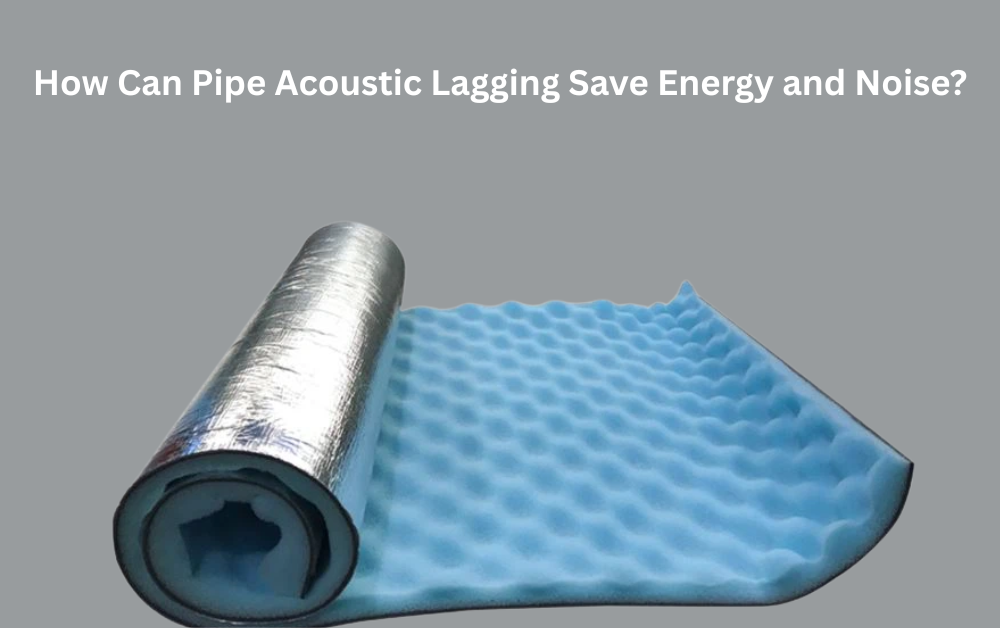In today’s rapidly evolving industrial and residential landscapes, controlling noise pollution and improving energy efficiency are top priorities. Among the many techniques employed to achieve these goals, pipe acoustic lagging stands out as an effective and practical solution. This specialized form of insulation not only reduces the disruptive noise generated by piping systems but also conserves energy by minimizing heat loss and gain. This article explores the mechanisms behind pipe acoustic lagging, its benefits, and why it has become essential in various sectors.
NOTE: Pipe acoustic lagging was installed to reduce noise and improve thermal insulation in industrial settings. It had enhanced operational efficiency and workplace comfort. Contact Perfect Acoustics today for professional soundproofing and insulation solutions tailored to your needs.
Understanding Pipe Acoustic Lagging
Pipe acoustic lagging is a process where pipes—carrying fluids, steam, or gases—are wrapped or covered with materials specifically designed to reduce noise and provide thermal insulation. These lagging materials absorb vibrations caused by fluid flow, mechanical movement, or thermal expansion, thereby significantly reducing the noise that pipes emit into surrounding environments.

The materials used for acoustic lagging are carefully engineered to balance soundproofing with thermal insulation properties. This dual functionality is critical because it addresses two interrelated problems: noise pollution and energy wastage due to temperature fluctuations.
Sources of Noise and Energy Loss in Pipes
Piping systems produce noise primarily from turbulence within the fluid, pressure changes, valve operation, and expansion or contraction caused by temperature changes. The noise travels through the pipe material and is transmitted into building structures, creating an uncomfortable environment for occupants or workers.
At the same time, pipes carrying hot or chilled fluids lose or gain heat to their surroundings if not adequately insulated. This thermal energy loss forces heating or cooling systems to work harder to maintain desired temperatures, increasing energy consumption and operational costs.
How Pipe Acoustic Lagging Reduces Noise
Vibration Absorption and Dampening
Acoustic lagging materials absorb the vibrational energy generated by fluid flow and mechanical movement. By wrapping pipes with these materials, the transmission of vibrations through pipe walls is reduced, which decreases the noise that radiates into rooms or workspaces.
Sound Wave Attenuation
In addition to vibration control, acoustic lagging acts as a barrier that traps and absorbs airborne sound waves generated within the pipes. This prevents sound from spreading into adjacent areas, contributing to a quieter indoor environment.
Prevention of Structural Noise Transmission
By breaking the pathway of sound vibrations traveling through structural elements like walls, ceilings, and floors, pipe acoustic lagging minimizes the amplification of noise within buildings.
How Pipe Acoustic Lagging Saves Energy
Thermal Insulation for Heat Retention and Protection
The lagging materials used for acoustic purposes also serve as thermal insulators. They minimize heat loss in hot water or steam pipes and prevent heat gain in chilled water or refrigeration lines. Maintaining fluid temperature reduces the energy required to reheat or cool fluids downstream.
Reduced Load on Heating and Cooling Systems
By preventing thermal energy loss, acoustic lagging helps boilers, chillers, and HVAC systems operate more efficiently. These systems consume less fuel or electricity to maintain consistent temperature levels, leading to significant energy savings.
Prevention of Condensation and Corrosion
In chilled water or refrigeration pipes, lagging prevents surface condensation by maintaining pipe temperatures above the dew point. This not only conserves energy but also protects pipes and building materials from corrosion and moisture damage.
Applications Benefiting from Pipe Acoustic Lagging
Residential and Commercial Buildings
Heating and cooling pipes in homes, offices, hospitals, and hotels produce both noise and energy inefficiency if not properly lagged. Acoustic lagging enhances occupant comfort by reducing mechanical noise and optimizing thermal performance.
Industrial Facilities
Factories and processing plants rely on extensive piping systems for steam, water, chemicals, and gases. Noise from these pipes can be hazardous to workers, and energy losses increase operational costs. Acoustic lagging ensures compliance with workplace noise regulations and energy conservation goals.
Marine and Offshore Installations
Ships and offshore platforms benefit from acoustic lagging to control noise and thermal efficiency in confined and sensitive spaces, improving crew comfort and system reliability.
Educational and Healthcare Institutions
In schools, universities, and hospitals, maintaining quiet and energy-efficient environments is critical. Acoustic lagging reduces noise distractions and supports sustainable energy use in these sensitive settings.
Selecting the Right Acoustic Lagging Materials
Choosing materials that deliver both soundproofing and thermal insulation requires understanding operating conditions such as temperature range, humidity, and exposure to chemicals. Common materials include mineral wool, elastomeric foam, fiberglass, and composite sheets specifically designed for acoustic performance.
Fire resistance, durability, and ease of installation are also important factors influencing material selection.
Installation Best Practices for Maximum Effectiveness
Correct installation is vital to ensure continuous coverage and avoid gaps that compromise acoustic and thermal performance. Pipes should be fully wrapped and secured, with seams sealed using acoustic tape or sealants to prevent sound leaks and thermal bridging.
Integrating acoustic lagging with vibration isolation techniques and complementary insulation improves overall noise and energy control.
Environmental and Economic Benefits
Pipe acoustic lagging contributes to sustainable building practices by lowering energy consumption and reducing noise pollution, which benefits both occupants and surrounding communities. The reduction in energy use translates into lower greenhouse gas emissions, aligning with environmental regulations and corporate sustainability goals.
Financially, the initial investment in acoustic lagging is offset by reduced energy bills, decreased maintenance costs, and improved employee productivity and health due to quieter working environments.
Conclusion
Pipe acoustic lagging offers a unique combination of noise reduction and energy conservation, making it an essential component of modern building and industrial systems. By absorbing vibrations, blocking sound transmission, and insulating thermally, it addresses two critical challenges in infrastructure management.
Its applications span residential, commercial, industrial, marine, educational, and healthcare sectors, proving its versatility and blocking sound transmissionimportance. As industries and facilities strive for greater sustainability and occupant comfort, pipe acoustic lagging remains a practical, cost-effective, and environmentally responsible solution.
Understanding its benefits and ensuring proper material selection and installation can help facilities achieve quieter spaces and significant energy savings, enhancing overall operational efficiency and well-being.
For More Isightful Articles Related To This Topic, Feel Free To Visit: penwhatmatters








